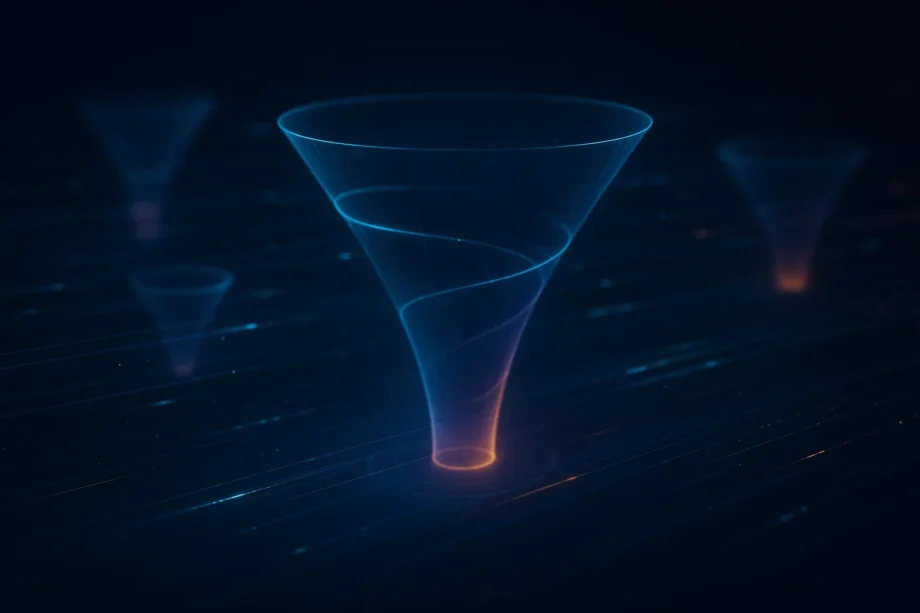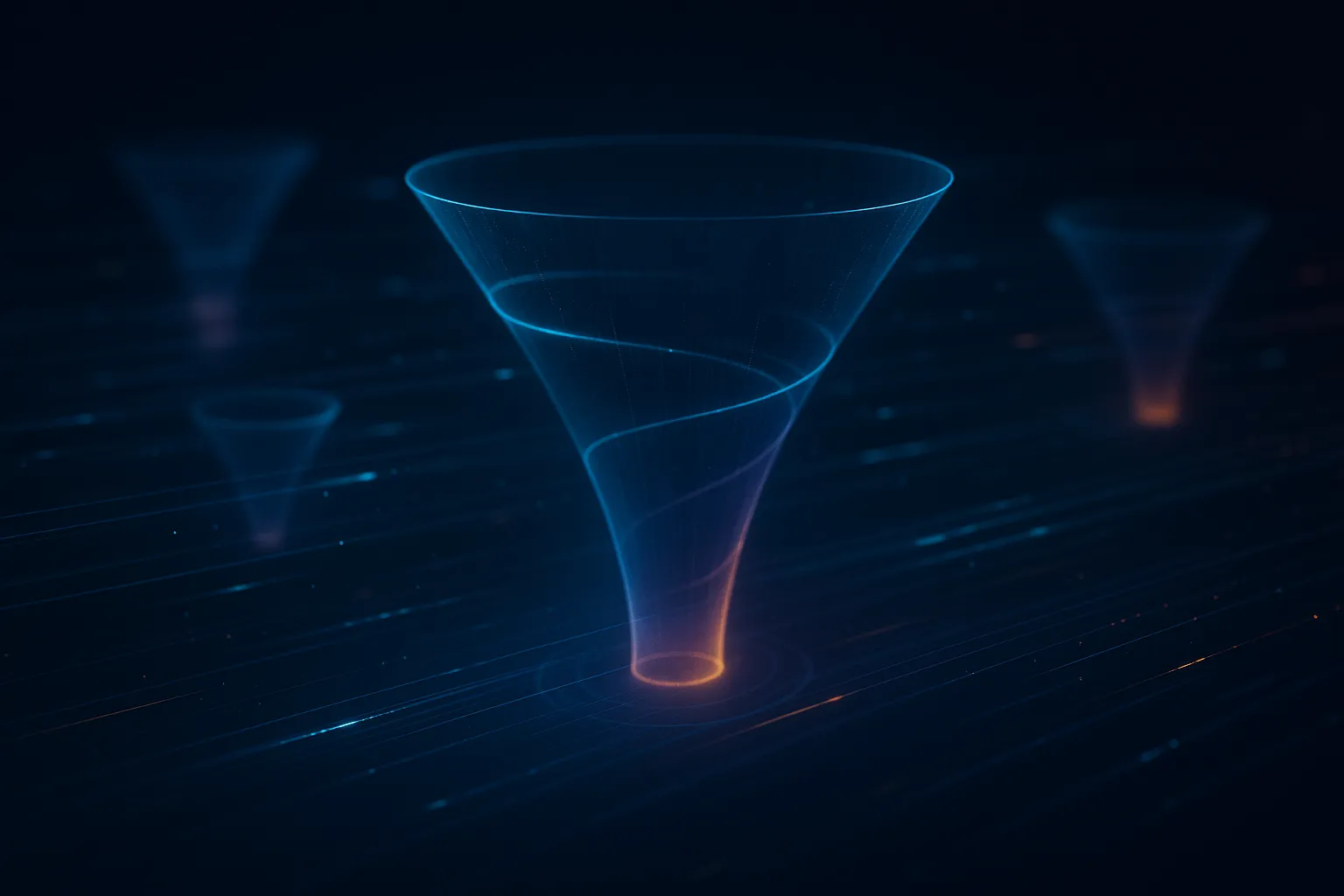I’ve been tinkering with marketing funnels for a while now, and let me tell you, it’s a whole different beast in 2025. So, how do you build a high-ROAS funnel with AI tools in 2025? Honestly, it’s getting harder every year—customer acquisition costs (CAC) are through the roof, attention spans are basically nonexistent, and scaling your return on ad spend (ROAS) feels like trying to catch lightning in a bottle.
But here’s the thing: 2025 has brought some seriously smart AI tools, predictive analytics, and automated testing that can turn your funnel into a conversion machine—from that first click all the way to the final sale. I’ve watched clients go from barely breaking even to a 6:1 ROAS just by using these tools the right way, and I’m here to spill all the details. Whether you’re a marketer, business owner, growth hacker, or agency, you’re going to walk away with a step-by-step plan to build a scalable, AI-powered funnel that actually works. Let’s dive in!
Table of Contents
What Is a High-ROAS Funnel in 2025?
I’ve built my fair share of funnels over the years, but what we mean by a high-ROAS funnel in 2025 is a whole new ballgame. Let’s break it down so we’re on the same page.
Definition of ROAS in Today’s Context
ROAS—return on ad spend—is all about the money you’re actually making, not those shiny vanity metrics like clicks or impressions. I’ve seen so many marketers get hyped about a ton of clicks, only to realize they’re not even breaking even. It drives me nuts! In 2025, you’ve got to look at the whole picture—full-funnel attribution is the only way to know what’s really working.
I had a client once who was ready to ditch their Google Ads because their last-click ROAS was terrible, but when we dug deeper, we found they were getting a 5:1 return across the entire funnel. Tools like Windsor.io (we’ll get to that later) can help you see that big picture and stop guessing.
Anatomy of a Modern Funnel
A high-ROAS funnel in 2025 isn’t just a straight shot from ad to sale—it’s a full journey: Awareness → Engagement → Conversion → Nurture → Retention. What’s cool is that AI tools for marketing can help at every single stage. For example, at the awareness stage, AI can whip up ads that grab attention like nobody’s business. During engagement, it can keep people hooked with optimized content.
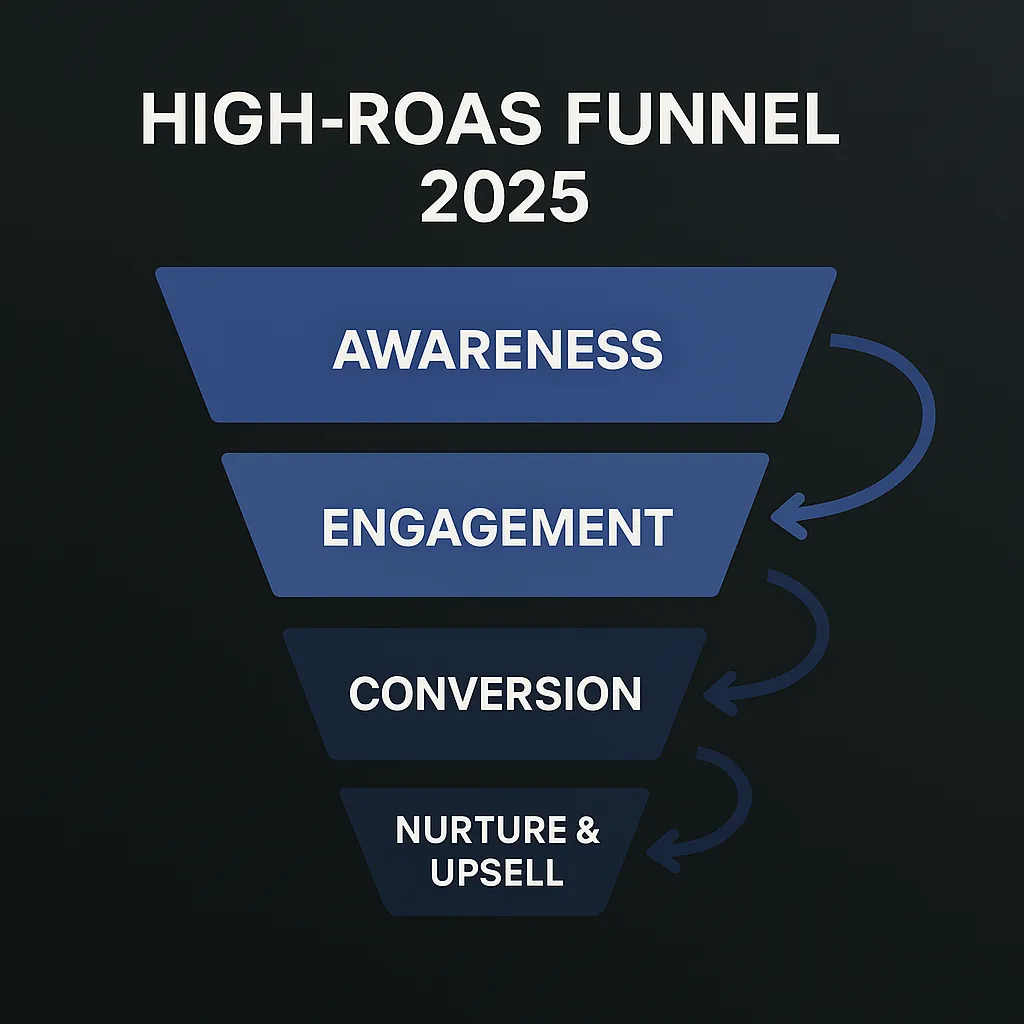
And for conversions? It’s all about smart automation and testing to seal the deal. I’m going to walk you through each stage and show you the exact AI marketing funnel 2025 tools to use to make it happen.
Funnel Stage 1: Awareness (Attract the Right Audience)
Okay, let’s start at the top—getting the right people to even notice you in the first place. In 2025, this is all about using AI to create ads that cut through the noise, because let’s be real, the digital space is a zoo out there.
I’ve been playing around with a bunch of tools to make this happen, and one that’s totally stolen my heart is AdCreative.ai. I first stumbled across it last year when I was desperate to help a client whose Meta ads were tanking—same old creatives, same old results, and their audience was just scrolling right past. AdCreative.ai changed the game for us. It’s like having a creative genius on speed dial—it whips up a whole bunch of ad variations based on whatever text and audience you throw at it.
I’m talking different headlines, images, CTAs, that works. What I love most is how it gives you a heads-up on what’s likely to work—it predicts your click-through rate (CTR) and even warns you when your ad might be getting stale. We ran a campaign across Meta, Google, and TikTok, testing out different hooks like “Invest Smart Today!” versus “Your Dream Property Awaits!”—and our CTR shot up by 20%. If you’re curious about how it works, especially for Dubai marketers, I found this awesome AdCreative.ai review 2025 that breaks it all down.
But AdCreative.ai isn’t the only trick up my sleeve. I also lean on tools like Copy.ai or Jasper.ai to come up with a bunch of ad headline ideas—stuff like “Save 50% Today!” or “Unlock Your Free Trial Now!” It’s a lifesaver when I’m stuck for ideas. And for scheduling all those social posts and visual creatives? I’ve been using Ocoya or Predis.ai—they let you plan everything out across platforms without losing your mind.
I learned the hard way that you’ve got to keep things fresh—don’t let your ads run too long, or your audience will tune out. I usually swap them out every 10-14 days to avoid that dreaded ad fatigue. Oh, and always test at least five different angles for each product. I did this for a fitness app once—tried “Get Fit Fast,” “Your Dream Body Awaits,” and a few others—and found a winner that doubled our click-throughs. It’s all about experimenting until you hit gold.
Funnel Stage 2: Engagement (Capture Interest & Build Intent)
So, you’ve got their attention—now you’ve got to keep them interested. This is the engagement stage, and it’s where AI marketing funnel 2025 strategies really start to shine.
I’ve been using a combo of Surfer SEO and Copy.ai to create blog posts and advertorials that rank for high-intent keywords—like “high-ROAS funnel”—and keep people hooked. Surfer SEO is like my secret weapon for figuring out what keywords to target and how to structure the content so it actually shows up on Google. Then, I use Copy.ai to draft the content, but here’s the thing—I always tweak it to sound more like me.
I’ll run it through Quillbot or Grammarly AI to make sure the tone feels natural, not like a robot wrote it. This combo is perfect for building what I call “content clusters” around your funnel topic—think a main blog post with a bunch of related articles linking back to it. It keeps people on your site longer, which Google loves.
Your landing pages need to be next-level in 2025, and I’m talking smart landing pages. I’ve been using Unbounce with their Smart Traffic AI, which is so cool—it tweaks the page based on who’s looking at it, like their device, location, or even language. Swipe Pages is another one I love for building landing pages that convert like crazy.
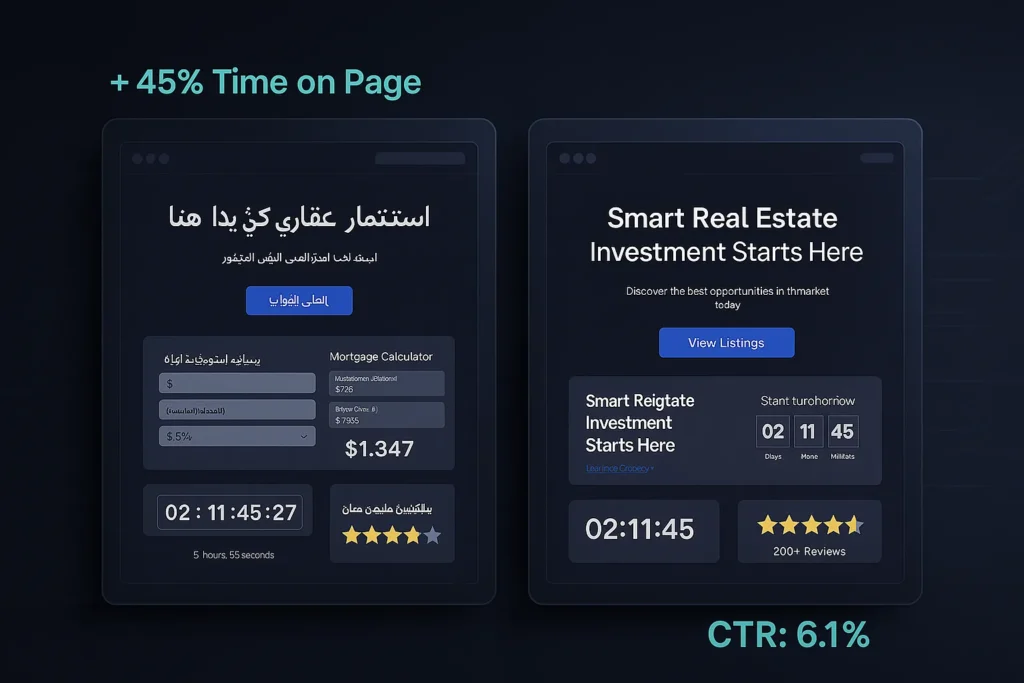
Add stuff like countdown timers, customer reviews, or calculators to keep people engaged. I worked with a client who added a “mortgage calculator” to their landing page, and their time-on-site jumped to over 4 minutes—way above the average of 3 minutes 10 seconds for top-ranking pages, according to Semrush. (You can check that stat on Semrush’s blog if you’re curious.) It’s little tweaks like that that make a big difference.
Funnel Stage 3: Conversion (Turn Traffic into Leads/Sales)
Now that they’re interested, it’s time to get them to take action—whether that’s signing up, buying, or whatever your goal is. This is the conversion stage, and AI tools for marketing can make it so much easier.
For conversion rate optimization (CRO), I’ve been loving VWO AI and ConvertFlow—they let you create dynamic CTA pop-ups that actually work. You can test different CTAs—like “Get Started Now” versus “Claim Your Free Trial!”—and the AI figures out which one gets more clicks for each user. Instapage is another tool I can’t live without—it’s got heatmap analysis and headline testing to see what’s really driving conversions. I used Instapage for a client’s campaign once, and we bumped their conversion rate by 10% just by changing the headline to something punchier. It’s amazing what a small tweak can do.
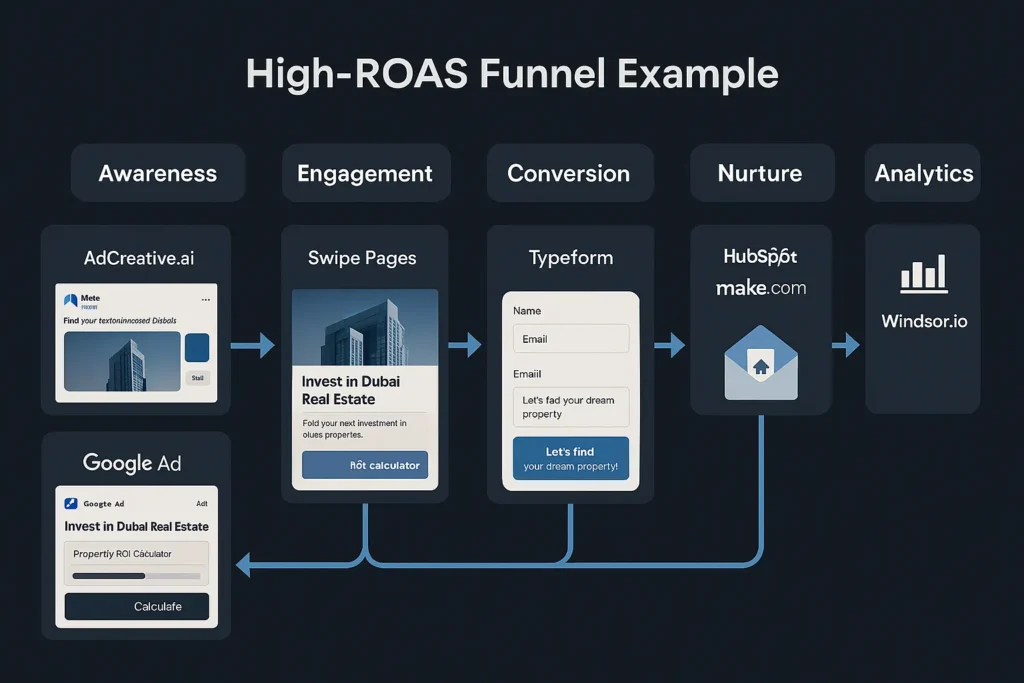
Forms are where a lot of conversions happen, and they’ve got to be as smooth as possible. I use Typeform with Make.com to pre-fill user data—nobody likes filling out a million fields, right? AI chatbots are a game-changer here too—I’ve been using Tidio AI and Chatbase to guide people toward the CTA. They’ll pop up with stuff like “Need help? Let’s get you started!” I’ve seen chatbots boost form submissions by 15% just by being there at the right moment. It’s like having a friendly salesperson on your site 24/7.
Don’t let those leads slip away—follow up fast! I set up WhatsApp and email flows using ManyChat, Sender AI, or Make.com. For example, if someone fills out a form but doesn’t buy, they’ll get a “Hey, let’s finish this!” message with a link to complete their purchase. It’s all about performance funnel automation that feels personal, not like a pushy robot. I’ve had clients tell me their follow-ups are what turned a maybe into a yes.
Funnel Stage 4: Nurture & Upsell (Boost LTV & Repeat Revenue)
Getting a conversion is awesome, but the real money in 2025 is in nurturing and upselling. This is where you boost lifetime value (LTV) and get those repeat sales.
I’ve been using Flowrite, Instantly.ai, and Smartwriter.ai to create AI email sequences that people actually open. These tools are great for coming up with personalized subject lines—like “Hey Abiraj, Your Plan Is Ready!”—and they even predict the best times to send. I had a client whose open rates went from 20% to 35% just by using predictive send times. It’s a small thing, but it adds up fast.
WhatsApp funnels are a total game-changer for nurturing—I can’t stop raving about them. Tools like WATI.io, Twilio with Make.com, or WA Web Tools let you set up trigger sequences based on what people do. For example, if someone checks out your pricing page but doesn’t buy, they’ll get a “Still thinking? Let’s chat!” message. I’ve seen WhatsApp funnels boost conversions by 20% because they feel so personal—like a friend checking in.

Want to upsell smarter? AI-based CRM integrations like HubSpot AI or Zoho AI are the way to go. They’ll suggest upgrade offers based on what people are doing or how much they’re spending. For example, if someone buys a basic plan, the CRM might nudge them toward a premium add-on a week later. I helped a SaaS company set this up, and their LTV went up 30% in three months. It’s like having a crystal ball for your customers.
Funnel Analytics & Optimization (The Feedback Loop)
You can’t make things better if you don’t know what’s going on, and in 2025, AI makes funnel analytics so much easier. Here’s how I keep a high-ROAS funnel running like a well-oiled machine.
Tools like Windsor.io, Triple Whale, and Hyros are my go-to for full-funnel ROI tracking. They show you the whole journey—ad creative to landing page to form to sale—so you can see what’s actually working. I had a client who was ready to ditch their Google Ads because they thought they weren’t working, but Windsor.io showed they were driving 40% of their sales through retargeting. That kind of insight is everything.
For reporting, I use Dashthis, Looker Studio with GPT Extensions, or Whatagraph. They give you AI-summarized weekly reports on how your funnel’s doing, plus ideas to make it better. For example, Looker Studio might say, “Your landing page bounce rate is 60%—try a new headline.” It’s like having a data nerd in your pocket.
And don’t stop testing—that’s my biggest piece of advice. Test your ad angles, landing page layouts, CTA copy, and retargeting flows. Use AI to figure out which tests are likely to give you the biggest wins. I’ve been doing this with a client’s funnel, and we’ve taken their ROAS from 3:1 to 6:1 in six months just by tweaking based on what the data tells us.
Real-World Funnel Flow Example
Let’s make this real with an example: a real estate investment company in Dubai. Here’s how their funnel looked, using the tools we’ve talked about:
- Awareness: They used AdCreative.ai to create 20 ad variations for Meta and Google, targeting “invest in Dubai real estate.”
- Engagement: A Swipe Pages landing page with a “property ROI calculator” kept people interested.
- Conversion: Typeform with a pre-filled form captured leads, and a WhatsApp flow (via Make.com) followed up with “Let’s find your dream property!”
- Nurture: HubSpot CRM sent personalized emails with property listings, and Make.com handled upsell offers.
- Analytics: Windsor.io tracked everything, showing a 4:1 ROAS.
This setup cut their cost per lead by 25%. If you’re in real estate, you’ll love this Real Estate Lead Generation in Dubai Guide—it’s got even more tips for winning online.
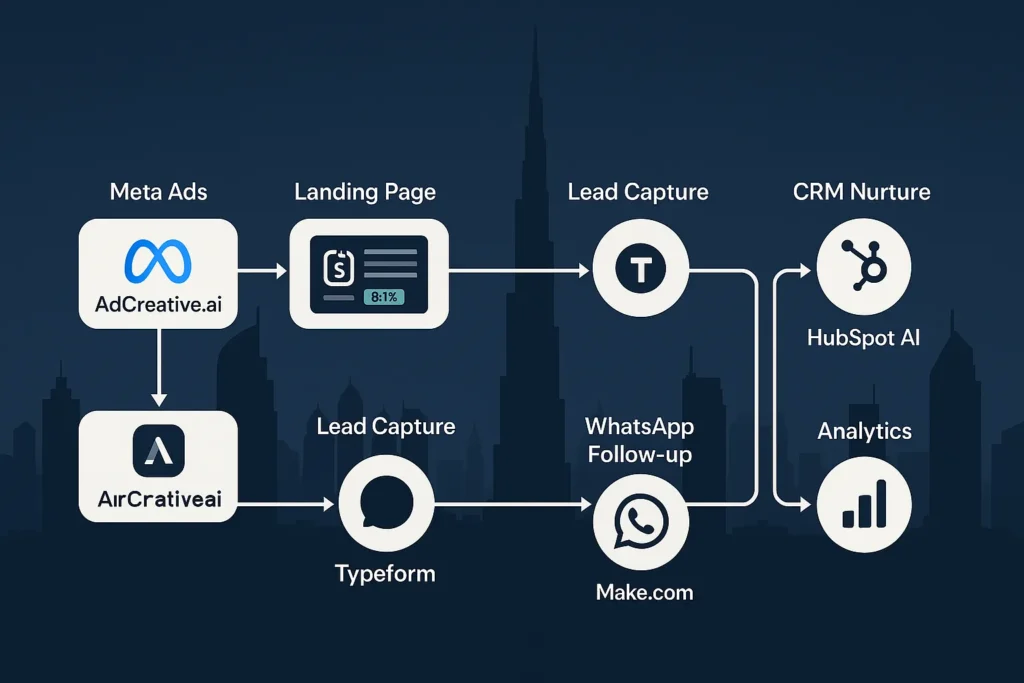
The Future of Funnel Building Is Automated + Intelligent
I used to build funnels the old way—hours of manual work, lots of guesswork, and way too many mistakes. I’m so glad those days are behind us! In 2025, AI Marketing Funnel 2025 strategies make everything so much easier—they streamline every step, boost your ROI, and help you scale without losing your mind. Tools like AdCreative.ai, Surfer SEO, and Windsor.io take care of the heavy lifting, so you can focus on the big picture. If you’re still doing things the old way, you’re missing out. Modernize your stack, and you’ll see results—I’ve seen it happen over and over.
Ready to build a high-ROAS funnel that actually converts? Book a free 30-minute audit with AI-Powered.pro to find the gaps in your current setup and get a custom plan to skyrocket your results. Let’s make 2025 your best year yet!


